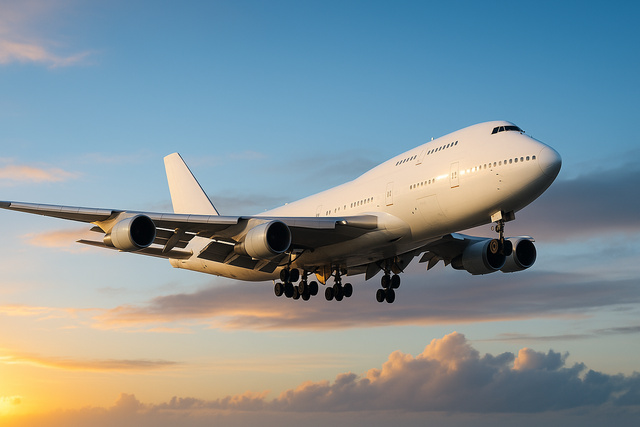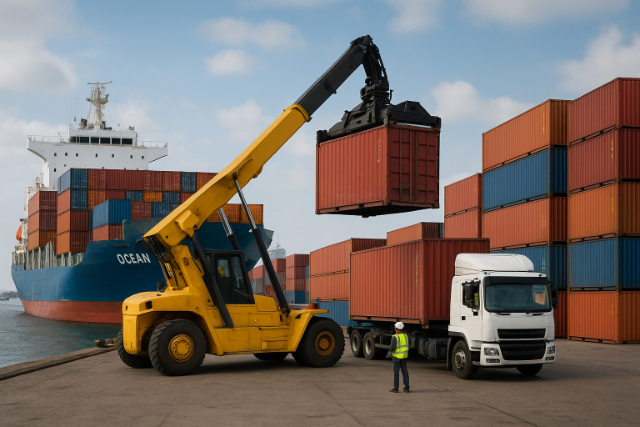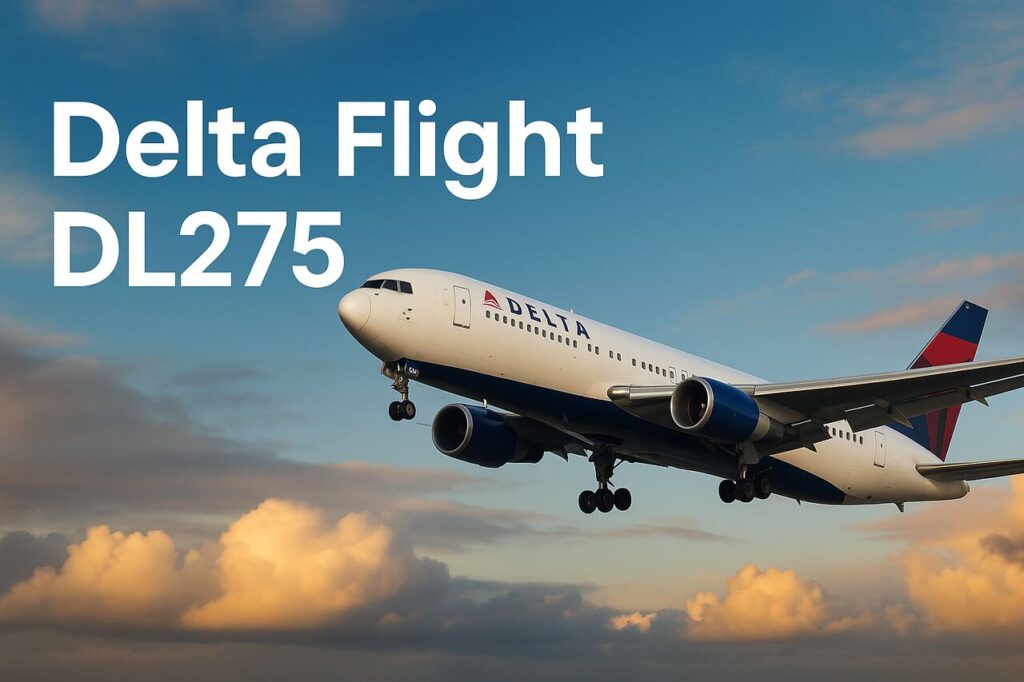Delta Flight DL275, operating from Detroit to Tokyo, became the focus of global aviation watchers when it diverted mid-route to Los Angeles International Airport (LAX). The aircraft, an Airbus A350-900 powered by Rolls-Royce Trent XWB engines, experienced a fault in its engine anti-ice system, leading the crew to reroute for safety and operational support. While diversions are rare, they illustrate how airlines, pilots, and regulators manage complex technical risks in real-time. Understanding what happened to DL275 sheds light on how modern aviation balances passenger safety, operational logistics, and financial realities.
Related Article: Comprehensive St. Thomas Beaches Guide: Top Beaches, Activities & Travel Tips
What Caused Delta Flight DL275 to Divert to LAX?
The immediate cause was a malfunction in the engine anti-ice system. On long-haul flights over oceanic and polar routes, anti-ice protection is critical, since supercooled water droplets and ice crystals can enter engines at cruising altitudes. Without effective anti-ice, the risk of airflow disruption, compressor stall, or engine surge increases, making continuation unsafe.
The Airbus A350 uses bleed air tapped from the engines’ compressor stages to heat critical nacelle surfaces. A fault in sensors, valves, or ducting can disable this system. Pilots may receive cockpit messages such as “ANTI-ICE FAIL” or abnormal engine indications. At that point, continuing into remote regions without diversion options would violate both safety protocols and regulatory standards.
This incident highlights how even highly redundant systems, monitored continuously, can require diversion. DL275’s crew made a conservative decision, prioritizing safety over schedule, consistent with FAA and Delta operational policies.
What is an Engine Anti-Ice System and How Can It Fail?
The system prevents ice from forming on fan inlets, spinner cones, and nacelles. Hot bleed air is routed through ducts to heat these surfaces. Failure can occur due to sensor malfunction, valve seizure, duct leakage, or software logic faults in the FADEC (Full Authority Digital Engine Control). Rolls-Royce engines employ multiple safety layers, but when redundancy is compromised, precautionary diversion is mandated.
What Symptoms or Alerts Would Pilots See Mid-Flight?
Pilots might notice ECAM (Electronic Centralized Aircraft Monitor) alerts, engine vibration data anomalies, or performance margin changes. In rare cases, asymmetric anti-ice protection between engines could lead to differential thrust risks. These warnings trigger decision protocols, leading to rerouting before the aircraft enters remote airspace like the Pacific.
Why Was LAX Chosen as the Diversion Airport Rather Than Closer Alternatives?

Although other airports were geographically closer, Los Angeles International offered superior maintenance and logistical support for a widebody Airbus A350. Delta TechOps, Delta’s maintenance arm, has established infrastructure at LAX, making it possible to diagnose and repair the Rolls-Royce Trent XWB system more efficiently than at smaller airports.
LAX also provides long runways, available gates for international arrivals, and extensive customs/immigration support. A diversion to Anchorage or Seattle was technically possible, but Los Angeles presented the best combination of technical, operational, and passenger-handling advantages.
What Facilities Does LAX Offer for Widebody A350 Maintenance?
LAX hosts hangars capable of servicing A350s, specialized ground equipment, and certified engineers trained in Airbus systems. Rolls-Royce parts and diagnostic tools are more readily available there. This reduces the downtime for both the diverted aircraft and the overall fleet.
How Do Airlines Balance Distance vs Support Capacity?
Pilots and airline operations centers weigh fuel availability, weather, runway length, passenger handling, and maintenance capability. While a closer airport minimizes flying time, a more distant hub with robust support may reduce overall disruption. DL275 illustrates this tradeoff: the longer diversion to LAX ultimately simplified repairs and passenger care.
How Did the Diversion Process Unfold Operationally?

Once the fault was detected, the crew followed structured decision-making frameworks such as FORDEC (Facts, Options, Risks, Decision, Execution, Check). Coordination with Delta’s Operations Control Center ensured alignment on the diversion airport. ATC provided rerouting clearances, while flight dispatch recalculated fuel burn, arrival times, and crew duty limits.
Fuel planning ensured reserves for holding patterns or go-around maneuvers at LAX. Simultaneously, gate operations and ground staff were mobilized. From a systems perspective, this event was handled as a controlled diversion, not an emergency landing.
What Decision Framework Do Pilots Use for Diversions?
Airline crews are trained in structured approaches like FORDEC or T-DODAR. These frameworks reduce cognitive load under stress and ensure all risks are considered systematically. Crew decisions are supported by airline dispatchers and maintenance controllers on the ground.
How Is Fuel Planning, ATC Routing, and Coordination Handled During Diversion?
Pilots must verify fuel sufficiency given rerouting, altitude changes, and alternate airports. ATC prioritizes diversions, providing expedited routes. Coordination extends to international clearances, customs processing, and connecting flight rebooking handled by the airline’s ground teams.
What Were the Consequences and Handling for Passengers?
For passengers, diversions often mean unexpected layovers, missed connections, and rebooked itineraries. Delta reprotected passengers on subsequent flights to Tokyo or alternative routings via Seattle, Minneapolis, or other hubs. Hotel accommodations, meal vouchers, and ground transportation were provided where necessary.
Passenger care depends on the jurisdiction. In the U.S., DOT requires basic rebooking obligations, while in Europe, EU261 rules mandate compensation for certain disruptions. DL275 passengers may not have received statutory compensation under U.S. law, but goodwill gestures and vouchers were likely issued.
Rebooking, Accommodations, and Customer Care
Delta’s customer service teams arranged hotel stays for overnight delays, distributed meal vouchers, and assisted with onward bookings. Priority was given to passengers with tight connections or onward international flights.
Rights & Compensation Depending on Jurisdiction
EU flights provide stronger compensation guarantees than U.S. routes. Since DL275 was U.S. outbound, statutory compensation was limited, but contractual “conditions of carriage” obligated Delta to provide care. Passengers using credit cards with travel insurance may have also accessed additional coverage.
What Are the Cost and Operational Impacts of Such a Diversion on the Airline?
Diversions impose both direct and indirect costs. Direct costs include fuel burn for rerouting, additional landing and handling fees, and unscheduled maintenance inspections. Indirect costs involve cascading disruptions to schedules, lost passenger goodwill, and potential crew overtime or reassignments.
For DL275, the diversion required refueling, extended crew duty, and rescheduling of the aircraft’s next rotation. A350 utilization is tightly planned, so delays ripple into subsequent flights.
Direct Costs: Fuel, Landing/Handling, Maintenance
Fuel alone for a long-haul widebody diversion can reach tens of thousands of dollars. LAX landing and gate fees add further expense. Maintenance checks, replacement parts, and engineering man-hours escalate the figure.
Indirect Costs: Schedule Ripple, Lost Revenue, Passenger Goodwill
Missed onward connections require rebooking on competitors, sometimes at Delta’s expense. Crew overtime costs rise, and aircraft out of service reduces overall fleet availability. Perhaps most significantly, diversions can erode customer confidence if not managed transparently.
How Can Such Diversions Be Prevented in the Future?
Predictive maintenance platforms like Airbus Skywise and Rolls-Royce’s TotalCare aim to catch anomalies before they trigger diversions. Continuous engine health monitoring analyzes vibration, temperature, and performance margins in real time.
Design safeguards also include redundancy in valves, sensors, and heating circuits. While no system is failure-proof, improvements in AI-based anomaly detection may reduce diversion frequency.
Predictive Maintenance, Health Monitoring, Anomaly Detection
By correlating flight data from thousands of aircraft, predictive algorithms flag early patterns. Airlines can then schedule maintenance proactively, avoiding unscheduled interruptions. Rolls-Royce uses “Engine Health Monitoring” (EHM) systems feeding into global operations centers.
Engineering Design Safeguards and Redundancy for Critical Systems
Modern jets employ multiple anti-ice valves, cross-bleed systems, and fail-safe modes. Engineering improvements aim to isolate faults to single components rather than entire systems. The DL275 case underscores why redundancy remains essential.
What Lessons Does DL275’s Diversion Teach the Aviation Industry?
The incident highlights how risk management over remote oceanic routes requires conservative decision-making. With limited alternates available, airlines must prioritize airports with strong technical and passenger-handling capacity.
Equally important is communication. Transparent updates to passengers maintain trust, while clear reporting reassures regulators and industry stakeholders. Diversions, while disruptive, reinforce aviation’s safety-first culture.
Risk Management Over Remote Oceanic Routes
Flights crossing the Pacific, Arctic, or Atlantic depend on contingency planning. ETOPS (Extended-range Twin-engine Operational Performance Standards) regulations dictate maximum diversion times. DL275’s reroute illustrates these rules in practice.
Communication, Transparency, and Brand Trust During Disruptions
Delta’s handling of passenger care, press statements, and operational updates influences customer loyalty. Airlines that communicate proactively fare better in maintaining brand reputation after disruptions.
Conclusion
The diversion of Delta Flight DL275 to LAX illustrates aviation’s layered approach to safety and decision-making. A technical fault in the engine anti-ice system triggered a carefully executed reroute, prioritizing maintenance support and passenger welfare. For Delta, the costs were significant, but the outcome reaffirmed the industry’s core principle: safety above all. For passengers and regulators, the event serves as a reminder of the resilience and complexity of modern air transport. For more informative articles related to Travel’s you can visit Travel’s Category of our Blog.
FAQ’s
No. A diversion is a controlled decision to reroute to an alternate airport, often precautionary. An emergency landing implies imminent danger and requires immediate descent and landing.
Diversions are rare. Rates vary by route and aircraft, but estimates suggest fewer than 1 in 500 long-haul flights experience mid-air diversions.
Travelers should keep medications, chargers, and essentials in carry-on bags. Airline apps assist with rebooking, and keeping receipts helps claim reimbursements.
Because LAX offered Delta TechOps maintenance facilities, sufficient runway and gate capacity, and better passenger handling support.
Depending on distance, aircraft type, and disruption scale, diversions can cost $50,000–$200,000 or more, including fuel, fees, and passenger care
Yes. Health monitoring and AI-based predictive tools increasingly help airlines catch issues before they escalate into diversions.


